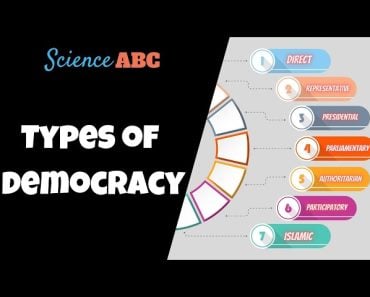Table of Contents (click to expand)
The Articles of Confederation had a number of weaknesses that led to their ultimate failure and replacement with the Constitution, including giving the states too much power, failing to create an executive or judicial branch, and limiting the federal government’s ability to regulate the economy or control military forces, among others.
In the United States of America, the Constitution is spoken of with great reverence by politicians on both sides of the ideological aisle. Second in importance only to the Declaration of Independence, the Constitution is a living and evolving document that outlines the structure of the government and ensures that no branch of government can become tyrannical or dangerously dominant. Although there may be different interpretations of the Constitution—and a sitting president who seems to show abject disdain for it—it remains a foundational element of America.

However, the Constitution was not the first governing document for the country! The Articles of Confederation officially defined the United States government from 1781-1789, a tumultuous time in American history that saw the original thirteen colonies gain their independence from Great Britain. However, after those first nascent years as a nation, the Articles of Confederation were deemed insufficient and ineffective, and were summarily replaced by the now-legendary Constitution. The obvious question is—why did the Articles of Confederation fail as the defining document of America?
Recommended Video for you:
A Brief History Of Government In The Colonies
The first colony in America at Jamestown, Virginia was founded in 1607, but by the 1640s, tens of thousands of Puritans had arrived on the colonial shores. It had become clear that there was power in unity, particularly in the face of threats from Native American populations and rival colonies from other countries, such as the Dutch colony of New Netherland, or a potential invasion from the French. In 1643, the first colonial federation briefly was formed, called the New England Confederation, consisting of the Massachusetts Bay, Connecticut, Plymouth and New Haven colonies.
Although the colonies were English, the larger and more established colonies were given royal charters, some of which granted the power of self-governance. However, in 1689, the Glorious Revolution occurred in England, which removed King James II from power. Following this shakeup of control, royal governors were appointed to nearly all the colonies. This resulted in a major increase of tension between the officials elected within the colonies and the governors appointed by a distant king across the ocean.

Other smaller, temporary unions were formed over the decades for defensive and trade purposes, but the next major federation didn’t occur until 1754, when legislative representatives from 7 of the 13 British colonies attended the Albany Congress. The intention of this Congress was to discuss how to handle the French threat encroaching from Canada and how to establish better relations with certain Native American tribes at the start of the French and Indian War. Making peace treaties with various tribes and planning the defense of the northern colonies once again showed the colonists the strength of their unity.
Individual rule of the colonies continued, although the Stamp Act Congress was called in 1765, in which delegates from 9 of the colonies attended, angered as they were by the unfair stamp tax imposed by the crown on the colonies. The delegates presented a unified protest to their royal sponsors, arguing that Parliament no longer had taxation control over the colonies, as there were no representatives of the colonies in Parliament! The legendary phrase and anti-British rallying cry of “No taxation without representation” was popularized after this governmental gathering one decade before the Revolutionary War.

The early 1770s were an era of increasing tension, with Britain increasingly trying to impose its will on the increasingly bold and independent colonies. Following the imposition of the Intolerable Acts, which were in retaliation for the Boston Tea Party, the First Continental Congress was convened, consisting of delegates from 12 of the eventual 13 colonies of the United States of America. The delegates wrote up a Petition to the King asking for a repeal of the Intolerable Acts, but their appeal was ignored.
One year later, in 1775, those delegates convened for the Second Continental Congress in Philadelphia, in order to plan for their unified defense against British forces. This second gathering of the Congress essentially became the governing body of the United States during the Revolutionary War, which began in April of 1775. That Congress eventually signed the Declaration of Independence on July 4, 1776 and became the provisional government of the United States for the next 5 years.

The Articles Of Confederation
In June of 1776, it was decided that three overlapping committees from within the Second Continental Congress would draft the Declaration of Independence, the Articles of Confederation, and a Model Treaty. While the Declaration was drawn up in less than a month and famously signed into existence on July 4, the Articles of Confederation were subjected to more than a year of debate before finally being approved and sent to the states for ratification. The Articles of Confederation represented the very first Constitution of the newly declared United States of America, so vocal and long-lasting debate came as no surprise. After all, the colonies were in the midst of fighting a war against an oppressive monarchical government; they sought to create something very different on the blank canvas of the United States. Once the articles were approved in 1777, it took another four years before all the states ratified the Articles of Confederation, a historic achievement that occurred on February 2, 1781.
The Articles of Confederation were most notably defined by a highly limited central government, with independence and sovereignty being largely given to the individual states (colonies). Under this new governing document, the central government was mainly responsible for military efforts and command of the Continental Army, along with the handling of foreign policy and negotiations with other nations. Almost every other aspect of government in the new country would be handled by states on an individual basis, including printing money, financial support of the central government, manufacturing, shipping, judicial ruling and state-specific legislation. The states also had their own militias, and were opposed to a national army, for fear that it would give the federal government too much power.

As America fumbled its way into nationhood, it quickly became apparent that the states’ fear of a tyrannical central government had a federal government that was actually too weak to function, fund itself, project confidence to the world, and protect its borders. Thus, by 1787, particularly following the divisive Shay’s Rebellion, it was decided that the toothless Articles of Confederation would have to be replaced. The United States Constitution—originally consisting of seven articles—was presented in September of 1787, ratified in June of 1788 and came into effect on March 4 of 1789, officially ending the governing rule of the Articles of Confederation.
Weaknesses In The Articles Of Confederation
As mentioned above, the founding fathers and Continental Congress delegates were extremely wary of creating a central government with too much power, and from that cautious stance, most of the Articles’ weakness arose.
Executive and Judicial Branch – Under the Articles of Confederation, there was no judicial or executive branch, nor were there any rules in place for the succession of power of the first president of the United States in Congress Assembled (John Hanson). Without either of these two branches established, there was a distinct lack of central powers and an inability to enforce laws over the states as a whole.
Supermajority – Today, most laws can be passed with a regular majority in Congress, but Congress under the Articles of Confederations required 9 of 13 states to vote yes on any legislation, i.e., a supermajority. This made it very difficult to pass laws and get anything done in those early years of the country.
Taxation – Taxation was one of the biggest complaints of the colonies in relation to England, so the central government of this newly formed nation was unable to collect taxes or enforce that collection in any way. Taxes were voluntarily offered by states to support the country’s needs, but this often resulted in a lack of appropriate funds for crucial programs, such as the military.
Foreign Policy – Due to the weakness of the central government, its inability to enforce foreign policy as a union, and the boldness of individual states, separate policies could be established between different states and other countries, which led to conflict and poor communication.
Amendments – Any amendments to the Articles required the approval of all 13 states, and given that not all the states got along, the idea of a consensus like that was laughable. Therefore, the Articles had little chance of being a living, evolving document as the needs of the country changed.
Currency – Unlike the situation now, where the central government handles all currency matters in the US, i.e., printing money, setting tax rates, controlling inflation, etc., each individual state under the Articles of Confederation could print their own money, which made trade between states incredibly difficult.
Military – Without a strong central government that could afford a standing army, each state had its own militia, and in the case of a serious uprising, i.e., Shay’s Rebellion in 1786/1787, a private militia had to be funded by private business interests to quell the conflict. This was a dangerous sign to the rest of the world, and the founding fathers, who had no interest in losing the country they had just fought so hard to win!
A Final Word
The Constitution may get all the glory as the governing document of America, but the Articles of Confederation were an important step towards the freedoms we enjoy today. Those Articles held together the delicate union of colonies through the hardest years of the Revolutionary War, and while they were far from perfect, they laid the foundation for so much of what Americans and other democratic societies hold dear today!













